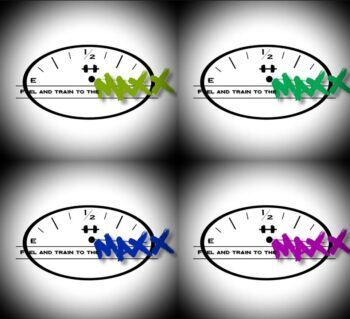The Magic Question: Is Intermittent Fasting the answer to Jump Starting Weight/Fat Loss?
 Have you ever set a weight loss goal to lose 15-30 pounds in a 30-days?
Have you ever set a weight loss goal to lose 15-30 pounds in a 30-days?
Have you ever said for 30 days, I can cut back on carbs and calories? I can fast intermittently (I’m still eating after all). I’ll eat salads with chicken or fish. I’ll eat certain fruits other than bananas, grapes and apples because they are high in sugar. I can exercise more. I’ll participate in a boot camp or join the gym taking all high intensity cardio and weight training classes.
Have you ever said, “For 30 days, I can tighten up and lose a bunch of this weight I have slowly put on over the past 1 to 5+ years”?
You are not alone!
In most cases, in the short-term significant weight IS lost. Unless the body just has stop responding. However, the long-term the weight comes back plus more!
What’s missing – the strategies, tools, education and accountability to stick with a highly personalized nutrition and lifestyle plan that leads to a revived up metabolism, increased energy levels and permanent weight loss…
Below depicts what’s not mentioned in the media about intermittent fasting for weight/fat loss and its effects on the body.
Remember that everyone is different. Nutrition and weight loss strategies are different for each person. Seek out solutions that you can implement for the rest of your life.
Feasting and Fasting
(A Brief Description of the Body’s Metabolic Pathways)
Overeating
When we eat in excess of our needs, the body stores a small amount as glycogen – this normal and desired. The rest in fat stores.
Fasting
About 3-4 hours after a meal, nutrients from that meal are no longer available and the body draws from both glycogen and fat stores to keep the brain and nervous system operating smoothly – again this normal and desired.
Fasting beyond glycogen depletion
As glycogen stores dwindle (after about 24 hours of starvation), the body begins to breakdown its protein (muscle and lean tissue) to make the fuel needed from the brain and nervous system. In addition, the liver converts fat to ketone bodies (think keto diet), which serve as an alternative source for the brain (brains preferred fuel is carbohydrates – think headache, light-headedness, fatigue) in efforts to slow down the breakdown of body protein and lean body tissue. This is an abnormal state for the body. At this point the body and its organs are working in overtime just to keep a person alive due to lack of carbohydrates primarily.
Gas in our tank – Energy
Energy (our gas) is needed all the time. Even when you’re asleep and totally relaxed, the cells of many organs are hard at work.
The cells work that maintains life processes, without any conscious effort, represents about 2/3 of the total energy a person spends in a day – also called basal metabolism (or basal metabolic rate – BMR).
A small remainder is the work that a person’s muscles perform voluntarily during waking hours!
Intermittent Fasting
The body’s metabolic pathway described above is under the assumption that the body has adequate carbohydrates, protein and fat (calories) to sustain life (independent of weight loss) at that last meal. However, during intermittent fasting (for weight/fat loss specifically), calories are more restricted below what the body needs to sustain life efficiently PLUS 6, 8, 12+ hours elapses between meals.
Hence, the same glycogen stores mentioned above dwindles between 6-12 hours rather than 24 hours. This puts extra stress on the liver and kidneys to keep the brain and nervous system functioning – hence keeping you alive.
Body’s Top Priority
The body’s top priority is to meet the cells’ need for energy, and it normally does this by periodic refueling (eating adequate calories/carbs at meals that meets individual body needs to sustain life). When food is not available, the body turns to its own issue tissues for other fuel sources. Minimizing effective weight/fat loss and the building of lean muscle. Also leading to low energy levels and constant feelings of fatigue.
When people choose not to eat or restrict calories/carbs, we say they are fasting. When people have no choice, we say they are starving. The body makes no distinction. In either case, the body is forced to draw on its reserves of carbohydrates and fat. Within a day or less (less with intermittent fasting), the body is forced to draw on its vital protein tissues as well.
In Summary
How about a safer approach to weight/fat loss?

Finally end the “yo-yo cycle” of dieting/intermittent fasting that will allow the body to burn fat effectively and efficiently resulting in real weight loss that sticks for the long haul.
Inbox me for how this can happen for your specific body needs and medical conditions. (mention ConVersatePromo)


